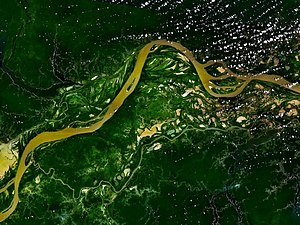
- Image via Wikipedia
I read Tales of a Shaman’s Apprentice when I was 14. I loved it. Mark Plotkin‘s recounting of the years he spent in the rainforest talking to indigenous people and learning what plants cured what diseases made me want to run off to the rainforest and do the same thing. Then I discovered that I don’t really like being muddy and tired and eaten half alive by bugs.
I do still find ethnobotany fascinating, though, and was thrilled when I received One River by Wade Davis as a gift a few years ago. I finally got around to reading it this semester and have started posting some particularly interesting passages. Hopefully you’ll be tempted to read One River after reading a few snippets – it really is a wonderful book.
In One River, the stories of plants and people are impossible to untangle, but the plants are definitely the focus. The botanist’s perspective might throw some people at first – people are often discussed to further the story of the plants. It was also pretty interesting to see different Amazonian cultures described by botanists who respect them, but who are clearly not trained as anthropologists.
One of the things that really bothered me about One River, though, was the near complete invisibility of women, especially indigenous women. In Tales of a Shaman’s Apprentice, Mark Plotkin is frustrated because, as a man, he is denied access to the ethnobotanical knowledge of women in many groups. However, he learns as much as he can from the women and speculates at length about the potentially incredible benefits of their knowledge to reproductive medicine. In One River the women are rarely even mentioned. They must have been there, but you certainly don’t know it from this book. I wonder how much of that is due to the cultures of these particular groups versus the sexist cultures of the botanists?
